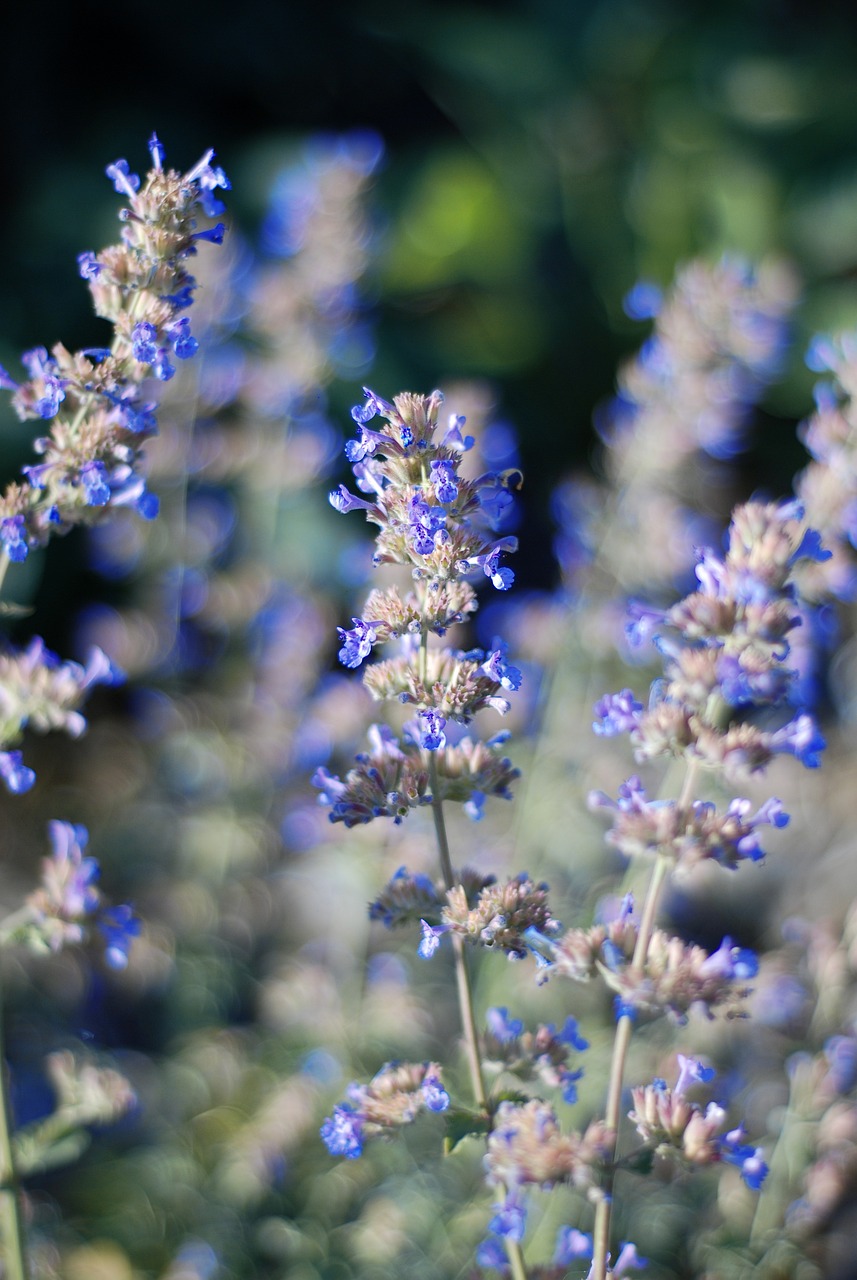
Catmint, with its delightful lavender blooms and intoxicating fragrance, is a beloved resident in many gardens. But beyond its solo beauty, catmint thrives in a supportive community. Selecting the perfect companion plants unlocks a world of visual intrigue, ecological harmony, and extended blooming seasons. Let’s delve into the captivating realm of catmint companions, where form meets function and your garden transforms into a masterpiece.
Sun-Kissed Synergy: Matching Catmint’s Needs
Catmint flourishes under the sun’s warm embrace, demanding well-draining soil and a good dose of air circulation. When choosing companions, prioritize plants that share these sun-worshipping tendencies. Here’s where the magic begins:
Floral Fireworks:
- Salvias in Splendor: Picture vibrant spikes of red, pink, or purple salvia dancing alongside catmint’s lavender haze. Salvias, like ‘Pink Profusion’ or ‘Blue Marvel’, boast similar sun requirements and attract a kaleidoscope of pollinators.
- Yarrow’s Cheerful Dance: Yarrow, with its flat, sunny-hued flowers, adds a burst of cheer to your catmint haven. Choose varieties like ‘Moonshine’ or ‘Gold Coin’ for contrasting textures and long-lasting blooms.
- The Allure of Alliums: Globe alliums, with their spherical purple or white flower heads, create a dramatic counterpoint to catmint’s delicate form. Remember, alliums have a short blooming period, so consider incorporating early-blooming perennials for year-round interest.
Foliage Friends:
- Lamb’s Ear’s Silvery Charm: Lamb’s Ear, with its soft, fuzzy leaves, provides a textural contrast and a soothing presence next to catmint’s vibrant blooms.
- Calming Calamagrostis: Ornamental grasses like Calamagrostis add a touch of movement and elegance. Their feathery plumes sway gently in the breeze, creating a sense of tranquility alongside catmint’s structured form.
A Feast for the Senses: Enticing Pollinators
Catmint is a magnet for butterflies, bees, and hummingbirds, all drawn to its irresistible nectar. By incorporating additional pollinator-friendly plants, you can create a vibrant ecosystem that buzzes with life:
- Aromatic Allure: Herbs like thyme, oregano, and rosemary not only complement catmint’s fragrance but also attract a plethora of beneficial insects.
- Coneflower Power: Echinacea, with its daisy-like flowers, provides a late-summer feast for pollinators when catmint’s blooms start to fade. Consider varieties like ‘Tomato Soup’ or ‘Cheyenne Spirit’ for vibrant color variations.
- Milkweed: The Monarch’s Lifeline: Planting milkweed provides a vital habitat for monarch butterflies, whose populations are in decline. While milkweed shouldn’t be planted directly next to catmint, incorporating it in a separate section of your garden fosters a butterfly haven.
Beyond Blooms: Practical Partners
Companion planting isn’t just about aesthetics; it can also enhance the overall health of your garden. Here are some strategic pairings for a thriving catmint community:
- Pest Patrol: Catmint is known to deter some pests, like aphids. Planting strong-smelling herbs like rosemary or lavender alongside catmint can further discourage unwanted visitors.
- Living Mulch: Creeping thyme, with its low-growing form, acts as a living mulch around catmint, suppressing weeds while retaining moisture in the soil.
- Nitrogen Fixers: Lupines or peas, with their ability to fix nitrogen in the soil, benefit neighboring plants like catmint by enriching the soil with this essential nutrient.
Designing Your Catmint Tapestry
Now that you’ve explored a delightful array of companions, it’s time to translate this knowledge into a breathtaking garden design:
- Color Coordination: Play with contrasting or complementary colors to create visual interest. For instance, pair blue catmint with fiery red salvia or golden yarrow. Alternatively, create a soothing symphony with lavender catmint and silver foliage plants.
- Height Matters: Consider the mature height of your chosen plants. Taller companions like Russian sage can provide a dramatic backdrop for catmint, while lower-growing options like creeping phlox can fill in empty spaces.
- Succession of Blooms: Stagger the blooming periods of your chosen plants to ensure continuous visual interest throughout the season. Early-blooming bulbs like tulips can introduce a burst of color before catmint takes center stage.
Conclusion: A Symphony of Catmint and Companions
With a thoughtful selection of companion plants, your catmint can become the star of a vibrant and thriving garden ecosystem. From the captivating dance of butterflies to the harmonious blend of colors and textures, witness your garden
